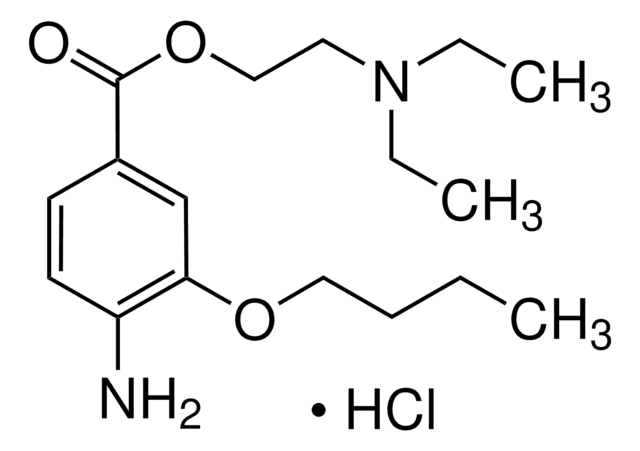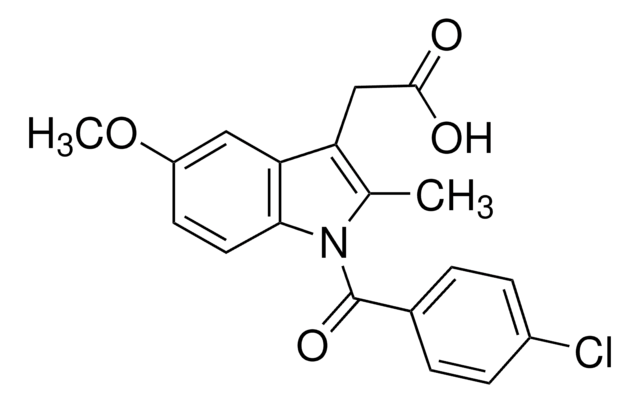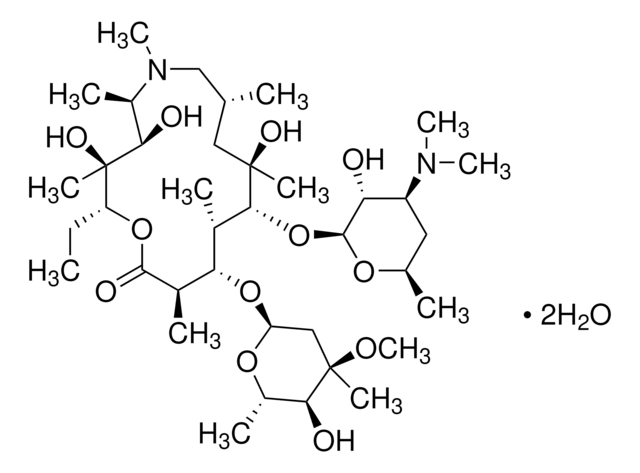B9050
Benoxinate hydrochloride
meets USP testing specifications
Sinonimo/i:
2-(Diethylamino)ethyl 4-amino-3-butoxybenzoate hydrochloride, 4-Amino-3-butoxybenzoic acid diethylaminoethyl ester, Oxybuprocaine hydrochloride
About This Item
Prodotti consigliati
agenzia
USP/NF
meets USP testing specifications
Livello qualitativo
Stato
solid
applicazioni
pharmaceutical (small molecule)
Stringa SMILE
Cl[H].CCCCOc1cc(ccc1N)C(=O)OCCN(CC)CC
InChI
1S/C17H28N2O3.ClH/c1-4-7-11-21-16-13-14(8-9-15(16)18)17(20)22-12-10-19(5-2)6-3;/h8-9,13H,4-7,10-12,18H2,1-3H3;1H
PRGUDWLMFLCODA-UHFFFAOYSA-N
Informazioni sul gene
human ... SCN10A(6336) , SCN11A(11280) , SCN1A(6323) , SCN2A(6326) , SCN3A(6328) , SCN4A(6329) , SCN5A(6331) , SCN7A(6332) , SCN8A(6334) , SCN9A(6335)
Cerchi prodotti simili? Visita Guida al confronto tra prodotti
Codice della classe di stoccaggio
13 - Non Combustible Solids
Classe di pericolosità dell'acqua (WGK)
WGK 3
Punto d’infiammabilità (°F)
Not applicable
Punto d’infiammabilità (°C)
Not applicable
Dispositivi di protezione individuale
dust mask type N95 (US), Eyeshields, Gloves
Scegli una delle versioni più recenti:
Possiedi già questo prodotto?
I documenti relativi ai prodotti acquistati recentemente sono disponibili nell’Archivio dei documenti.
Il team dei nostri ricercatori vanta grande esperienza in tutte le aree della ricerca quali Life Science, scienza dei materiali, sintesi chimica, cromatografia, discipline analitiche, ecc..
Contatta l'Assistenza Tecnica.






